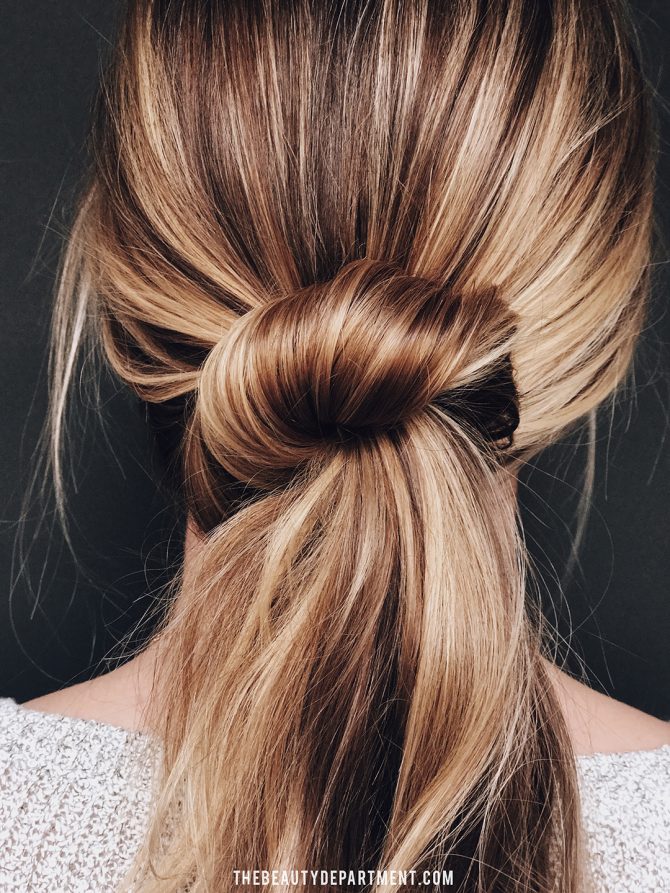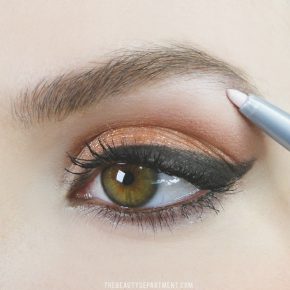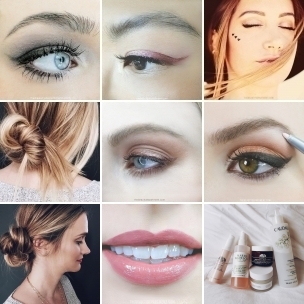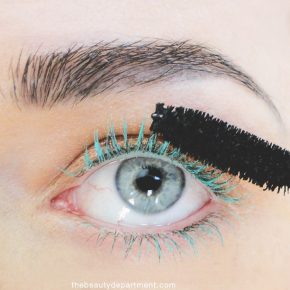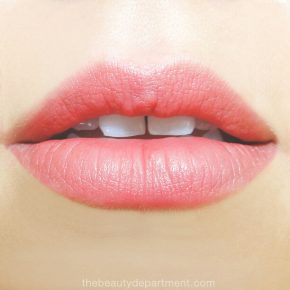hair
TECHNICALLY SPEAKING
Alright, so looking at hair under a microscope is always a little bit creepy + gross. I’m only showing you this with the hopes that it might change the way you treat your hair. Once you know the cause of damage, it’s easier to prevent it, right? Here’s the long and the short of it:
- a. This is a close look at healthy hair. The cuticle (the outer layer) lays smooth. All of it’s “scales” are lined up and flat, one on top of the other. Flat cuticles = smooth surface. Smooth surface = light reflection. Light reflection = more SHINE!
- b. This is a slightly raised cuticle. I would say this is what the average person’s hair looks like if they use a blow dryer. The other cause of slightly raised cuticle can be towel drying. It’s okay to towel dry it but don’t rough it up. Work your way down the hair. Or gently scrunch it if you’re going for waves. As I mentioned in a previous post, t-shirt drying is much safer than towel drying and it helps to eliminate frizz big time.
- c. This is an extremely raised cuticle. Main causes are bleaching, over-processing with color, over-styling with heat, using too many alcohol based products in conjunction with heat styling, shampooing and not conditioning, etc… This is bad news. When your cuticle looks like this your hair will appear dull, and lifeless. It can’t reflect shine when the surface is broken up this way. Hair Bootcamp is a must for this hair. (Which just so happens to be one of my posts for next week!) If you don’t change your routine, you’ll be looking at breakage very soon.
- d. Here we have a piece of hair that WILL eventually break off. This was most likely caused by harsh detangling. Never rush through a knot. Take your time and comb it out slowly. I also recommend getting knots out with a brush instead of a comb. Sometimes the single row of teeth on a comb can actually tighten the knot. I always work knots out slowly with a brush. Another may-jor cause of this is yanking out a ponytail holder. Stop yourself and work the tangle around the ponytail holder out slowly. Sadly, once this has happened in the middle of a piece of hair, it’s definitely coming off. Collect a bunch of these and you’ve got yourself a nice case of the fly-aways! Booooo.
- e. Well hello split-end. This is the enemy!! I’m actually really happy that you guys are seeing this because just knowing what split ends looks like will help you understand how they get stuck on each other. They’re like claws that can grab onto one another causing tangles. Tangled ends cause even further damage. It’s important to get them off regularly.
- f. This is knotted hair. If not properly and carefully brushed out, a knot will lead to “example d.” If you gently brush it out, you can avoid that. (Also, this is just a really cool look at knotted hair!)
- g. This is a shattered hair shaft. This can be caused by a bad application or rough removal of extensions. Another cause could be a bad perm (solution, the way it’s wrapped and how it’s processed). Not sure too many of you are getting perms, but if you are, please be sure to visit someone who specializes in that. Not just someone who will say yes because they want to make the money from the service. If you have extensions, make sure the person doing them is gentle, takes their time and isn’t too aggressive with your delicate hair!
Whatever kind of hair you have, you’re now one big step closer to “example a.” above. We’ve got to be good to our hair! Learn it + love it.



